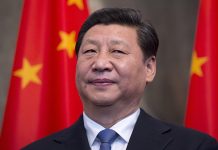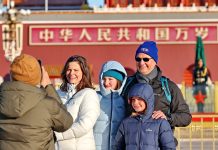BEIJING: During his days working for the local government and an accounting firm in his hometown of Hong Kong, Lo Yuenlai cherished an entirely different professional dream—to work in the field of technology and innovation. After learning about the opportunities opening up in Shenzhen, Guangdong Province, the young man decided to give it a go.
“Compared with Hong Kong, the mainland features a larger space with more diversified industries that can broaden my horizon. That’s what attracted me most,” the 25-year-old told Beijing Review. He has been working in Shenzhen for almost two years now, at a hi-tech company focusing on machine vision in the Qianhai Shenzhen-Hong Kong Youth Innovation and Entrepreneur Hub (E Hub) located in Qianhai, a special economic zone in Shenzhen just across the water from Hong Kong Special Administrative Region (SAR).
Established in December 2014 and jointly operated by the zone’s administrative authorities, the Shenzhen Youth Federation and the Hong Kong Federation of Youth Groups, E Hub is a successful case of Guangdong-Hong Kong cooperation. It is also an important part of the plan for comprehensively deepening the reform and opening up of the Qianhai Shenzhen-Hong Kong Modern Service Industry Cooperation Zone (the Qianhai plan) issued by China’s central authorities in early September. The plan expands the area of the Qianhai zone by eight times, from 14.92 square km to 120 square km.
Similarly, a plan for the creation of a Guangdong-Macao in-depth cooperation zone in Hengqin (Hengqin plan) was also issued in the same month. Together, the two plans provide a broader, more convenient and higher-quality environment for residents of the mainland and both SARs to live, invest and work in, said Leung Chun-ying, Vice Chairman of the National Committee of the Chinese People’s Political Consultative Conference, at an online seminar on September 13.
They also offer more diversified development prospects for enterprises in Hong Kong and Macao, and allow for multinational companies and the international community to seek business opportunities across the vast mainland market, Leung added.
Four years after settling in E Hub, BMTek, where Lo works, has gone through an unprecedented growth spurt. Its staff has grown from a mere seven members at the very beginning to the current number of more than 100. At this time, the innovation and entrepreneurship-friendly E Hub has attracted over 500 companies like BMTek and drawn in more than 3,600 professionals from the two SARs to come chase their dreams in the area. Nearly half of these companies are from Hong Kong.
E Hub-based businesses can enjoy rent discount and other subsidies from both the municipal government and the hub’s authority, Lo explained, adding that the zone’s regular industrial exchange activities can be a good way for companies and employees alike to reach new levels.
– The Daily Mail-Beijing Review News exchange item





